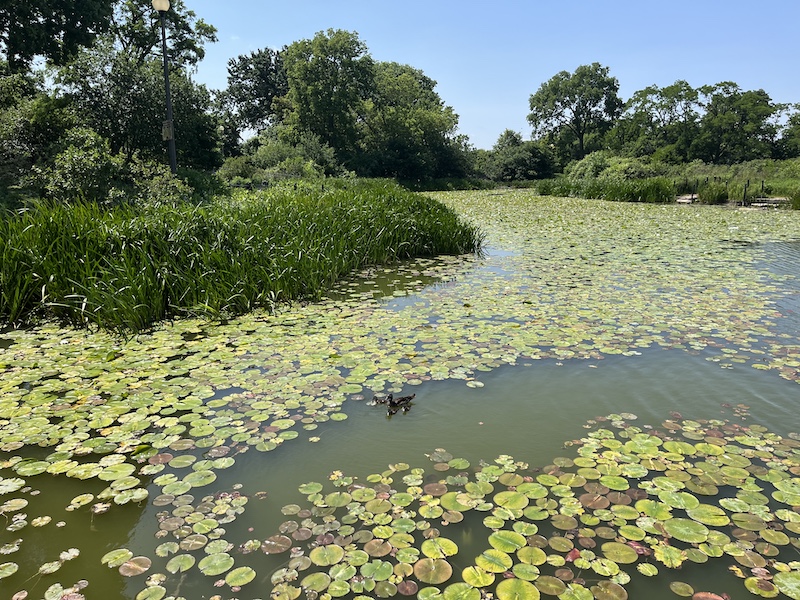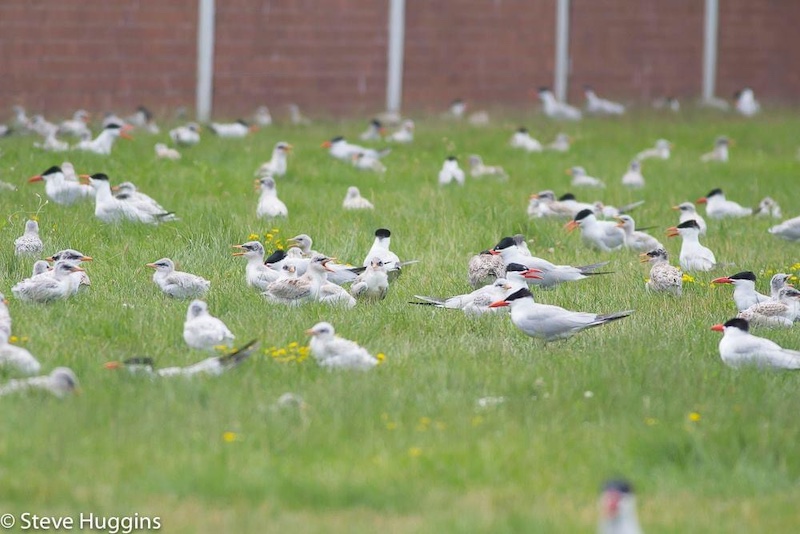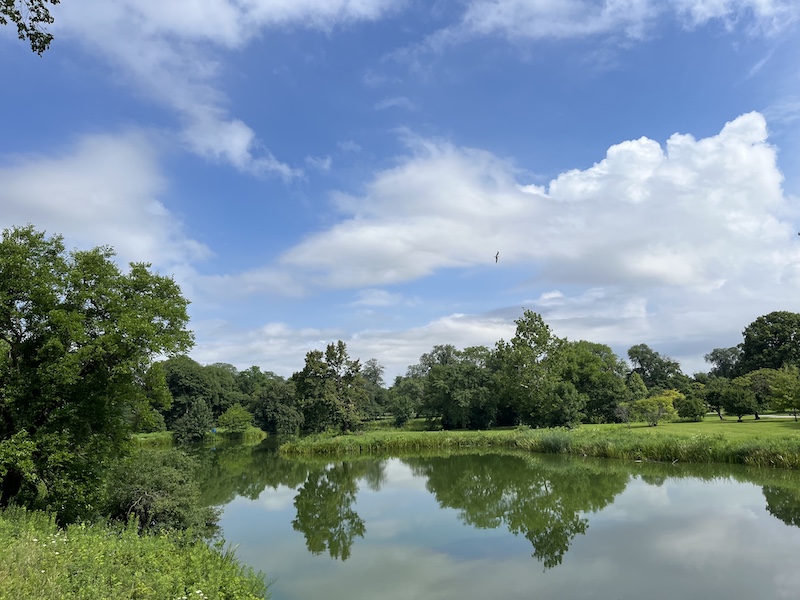
Photo by Channel City Camera Club from Santa Barbara, US, CC BY 2.0, via Wikimedia Commons.



Photo by Channel City Camera Club from Santa Barbara, US, CC BY 2.0, via Wikimedia Commons.
The sun glints off the water during a beautiful, sunny June day in Chicago at Humboldt Park. While wood duck (Aix sponsa) ducklings follow their mother through a lily pad patch, a mostly white bird with a gleaming red bill circles over the water. The bird hovers for a second, then folds in its wings and plummets down 20 feet into the water. A small fish is grasped tightly in the bright red bill as it flies up from the water’s surface. This avian angler of Chicago Park District lagoons is the Caspian tern (Hydroprogne caspia).

Caspian terns are the largest terns in the world with a wingspan just over 4 feet. They are white underneath with dark wingtips and have pale gray wings above. A black cap contrasts with their lighter body and straight, red bill. During the non-breeding season (October – February), the black cap fades slightly. Moreover, you may hear their distinctive and loud raucous call reverberating from the nearest water body.
While in the same family as gulls (Laridae), terns in general have longer, more pointed wings relative to their body size. The Caspian tern is about the same size as the ring-billed gull (Larus delawarensis), a common gull seen throughout the Chicago region and in your local mall parking lot. In comparison to ring-billed gulls, Caspian terns have a red bill versus a yellow bill with a black ring and a black cap instead of an all-white head.
For the taxonomists out there, the Family Laridae also includes the unique black skimmer (Rynchops niger) and lies in the Order Charadriiformes. Both sandpipers (Scolopacidae) and plovers (Charadriidae), including the famous Montrose Beach piping plovers, also fall in the same order. Returning to the Caspian tern, they are the only bird in their genus Hydroprogne which comes from Ancient Greek for water (hudros) and Latin for swallow (progne).
Unsurprisingly, Caspian terns eat mostly fish but will also eat crustaceans and insects. To catch fish, Caspian terns fly over the water with their bill facing downward and plunge into the water after locating a fish. Occasionally, these birds will also catch prey from the surface without submerging.
Caspian terns are considered a cosmopolitan species, or the opposite of endemic species. Whereas endemic species are only found in a very specific region, like many of the species on the Galápagos Islands, cosmopolitan species can be found around the world. Caspian terns can be seen on every continent except Antarctica and inhabit both freshwater and saltwater environments.
In the northern areas of the United States, Caspian terns are only present for the warmer months. That means the Caspian terns seen in Illinois during the spring through fall migrate south for the winter. While not as an astounding a long-distance migrant as the arctic tern’s (Sterna paradisaea) migration from pole to pole, Caspian terns in the northern United States migrate to the southern United States, the Caribbean, Central America and the northern tip of South America.

According to the Illinois Ornithological Society, Caspian terns are regular breeders in the state, and in this case means they were recorded breeding in at least eight of the last 10 years. The first confirmed breeding colony of Caspian terns in Illinois was found in 2009 nesting on top of a building near Navy Pier by Steve Huggins, now a bird guide for Red Hill Birding. Initially a small colony, it quickly grew into hundreds of birds in subsequent years. Currently, Caspian terns are not believed to be breeding on this building.
On multiple years, including 2018, when the roof became scorching hot, the chicks jumped from the roof to the grass below. The adults kept bringing fish back for the young and many of them successfully fledged.
Over a decade previously, the first nesting Caspian terns were confirmed in Indiana in 1997, just across the Illinois border in East Chicago. Caspian terns are still nesting along the Lake Michigan lakefront in Indiana as can be seen from the recent social media post from the Indiana Audubon Society.

These terns nest on the ground in colonies, although there can be single pairs in certain areas of their range. The nest itself is a small scrape on the ground in a flat area without much vegetation. As evidenced by nesting on top of buildings near Navy Pier, Caspian terns have adapted to using the flat roofs of certain buildings to nest close to water. One of the photos from the Indiana Audubon Society social media post showcases a steel-mill roof with a Caspian tern nesting colony.
Caspian terns forage for food by flying over different types of water bodies. In Chicago, the author has seen Caspian terns fishing at Beaubien Woods, Humboldt Park, Sherman Park, Calumet Park and Marquette Park since the calendar turned to June. Reviewing eBird data, Caspian terns are also seen at the birding hotspot Montrose Point Bird Sanctuary throughout the summer.
Caspian terns are just one of the many birds seen across the Chicago region, and one of many birds that eat fish (keep an eye out for great blue herons, green herons and black-crowned night herons fishing). Without a close look, Caspian terns may appear like one of the many ring-billed gulls or “seagulls,” but take a moment for a second glance. If you are lucky, you might see that the bird is indeed a Caspian tern and then possibly watch it dive headfirst into the water for its next meal.

Michael Kamp is an environmental conservationist who is currently working as a Conservation Education Representative for the Illinois Department of Natural Resources Division of Fisheries. Previously, he worked in outreach and communication for The Nature Conservancy, the Wisconsin Department of Natural Resources and the Nelson Institute for Environmental Studies at UW-Madison. A lifelong birder, he enjoys sharing his love of birds and nature with others.
Submit a question for the author
Question: Where and when can one see in Illinois Sandhills Cranes migrating south from their summer areas?